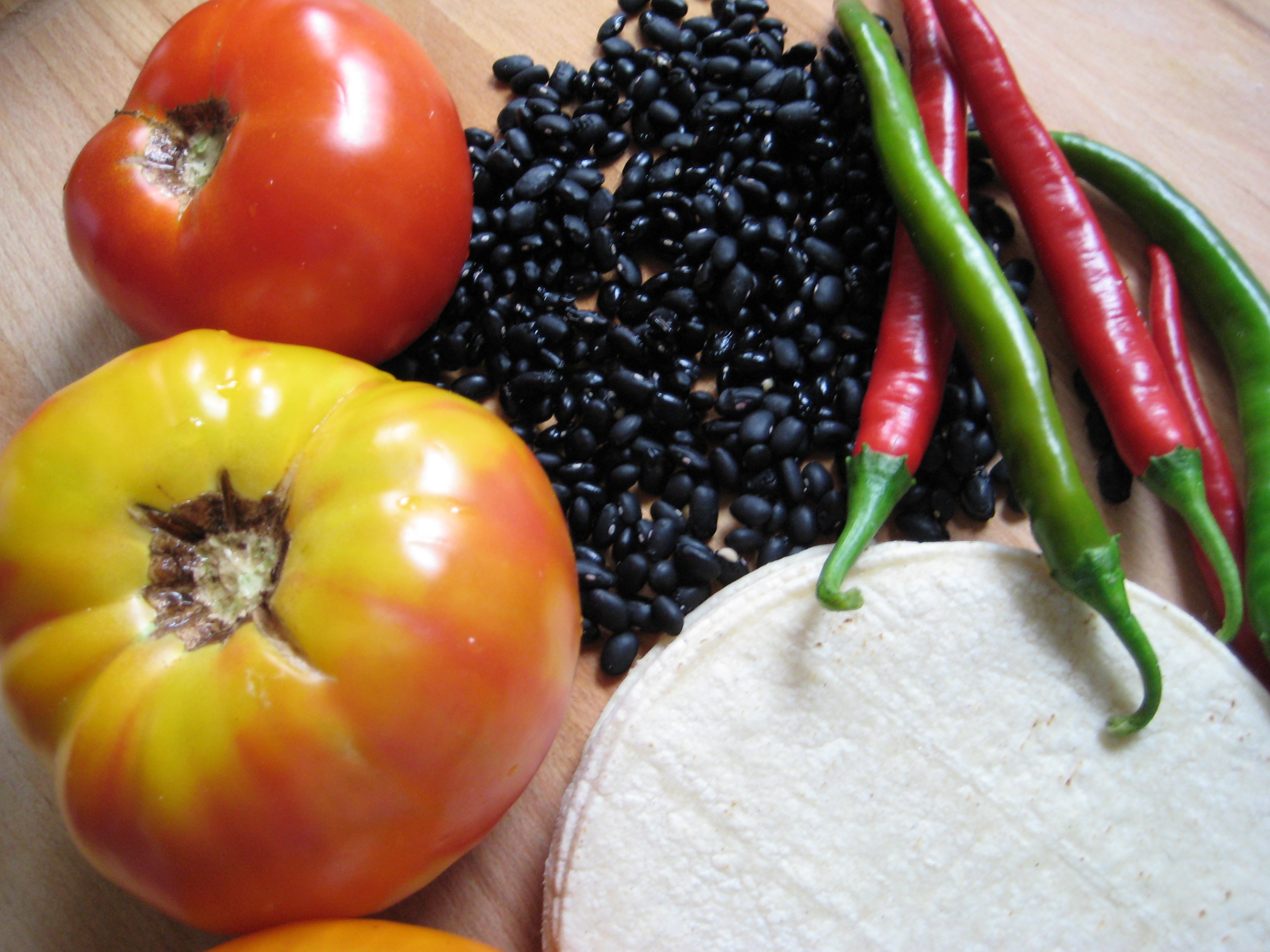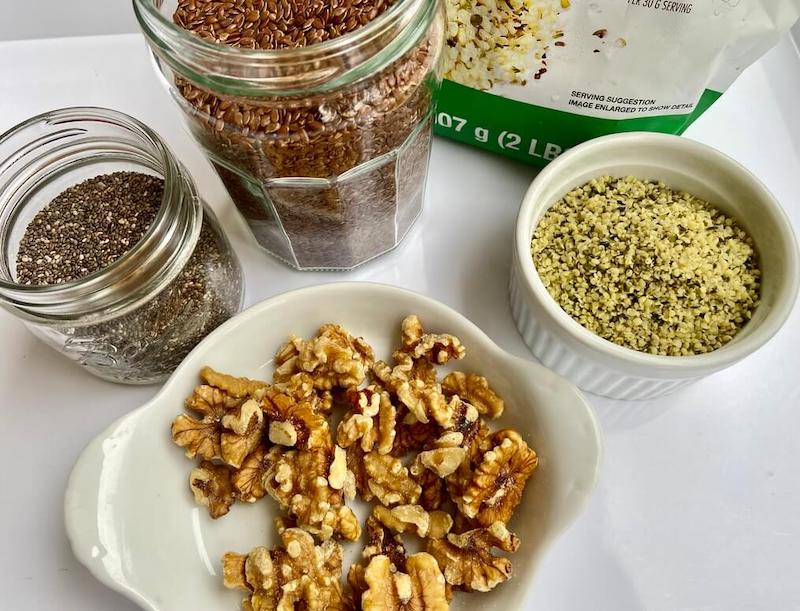It can be overwhelming to change one’s eating habits whether you want to improve your diet, lose weight or become a vegetarian. Meat is often the centerpiece of the meal, so when that is removed, what takes its place?
One of the biggest mistakes I see vegetarians make is replacing all animal products with refined carbohydrates, like pasta, rice, bread, or snack foods like crackers, chips and sweets. These foods provide calories but not much nutrition.
This post will help guide you on plan a balanced meal and what nutrients you need to watch out for when you become vegetarian.
Why become a Vegetarian?
People become vegetarian for a variety of reasons. You may want to improve your health, help the environment or have concerns about animal welfare to name just a few. Whatever your reason for choosing a plant-based diet, if planned appropriately, it can improve your health, help you lose weight, and protect you against chronic diseases.
What is a Vegetarian?
A Vegetarian is someone who eats a plant-based diet that includes fruits, vegetables, beans, legumes, seeds, and nuts but avoids meat, poultry, and fish.
Types of Vegetarians:
There are different types of vegetarians, and they vary in what animal products are restricted.
1. Vegans: This is the strictest form of vegetarianism. Vegans only eat foods of plant origin and exclude all meats, meat products, fish, dairy, eggs, and sometimes honey. Some health experts believe that the vegan diet is the healthiest of all vegetarian diets. But it can also be the most challenging to follow. It requires some planning and experimenting, and depending on where you live, can be challenging when eating out.
2. Lacto-Ovo Vegetarians: These vegetarians do eat “lacto” or dairy products, and “ovo”, eggs. You can also be a Lacto Vegetarian, including only dairy products and no egg, or Ovo Vegetarian, including eggs but no dairy.
3. Pesce Vegetarians: These vegetarians include fish in their diets.
4. Semi-Vegetarian or Flexitarian: Some people, including myself, describe it as being a “vegetarian with benefits”. Technically not a “real” vegetarian since flexitarians eat meat or poultry on occasion.
Benefits of a plant-based diet:
* lower cholesterol levels
* lower risk of heart disease
* lower blood pressure levels
* lower risk of hypertension
* lower risk of type 2 diabetes
* lower body mass index (BMI, see post on BMI for more info)
* lower overall cancer rates
Nutrients to consider as a Vegetarian:
When you follow a plant-based diet, you need to make sure you get enough of the following nutrients:
Omega 3 fatty Acids: are essential fatty acids, which means the body can’t make them on its own, but they come from the foods we eat. They are polyunsaturated fatty acids (PUFA), which are important for heart health and may reduce the risk of heart disease.
There are three types of omega-3 fatty acids:
1. DHA (docohexaenoic acid)- found in fish and shellfish
2. EPA (eicosapentaenoic acid)- found in fish and shellfish
3. ALA (alpha-linolenic acid)- found in flaxseed, canola and soybean oil, walnuts, and soy.
The body is able to make EPA and DHA from ALA but in smaller amounts and at a slower rate. If you are vegan or a vegetarian and don’t eat fish or seafood, boost your intake of good sources of ALA and or add a DHA supplement made from microalgae.
The Dietary Reference Intakes recommends 1.6 g ALA for men and 1.1g for women per day but vegetarians may need more if fish and seafood are avoided. It’s also important not to eat excessive amounts of omega six rich foods since they further decrease the conversion of ALA to DHA and ALA. Omega six rich foods are found mainly in vegetable oils such as corn, sunflower, soy, and cottonseed oils.
Iron: Iron helps transport oxygen in the blood. There are two forms of iron: heme and nonheme iron.
Heme iron can be found in animal sources such as meat, poultry, and fish.
Nonheme iron is found in plant sources such as beans, legumes, green leafy vegetables, soy foods, whole-grain and fortified foods. The drawback in getting iron by non-heme sources is that it’s less absorbable than heme iron, and it’s influenced by “enhancers” and “inhibitors” (see below). On the plus side, your body becomes better at detecting if you are in need of more iron and becomes more efficient in absorbing it, regardless if it’s heme or nonheme.
Enhancers of Iron Absorption: Try to include these when eating iron-rich foods.
• citrus
• tomato
• vitamin C enriched juices
• cast-iron cookware
Inhibitors of Iron Absorption: Try to avoid these when eating iron-rich foods.
• dairy products
• black tea
• coffee
• cocoa
• red wine
Zinc: Zinc helps your immune system, promotes wound healing, and plays a role in your ability to taste.
Good vegetarian food sources of zinc: oysters, seafood, fortified cereals, beans nuts, whole grains, and dairy products. The National Institute of Health recommends that vegetarians eat as much as 50% more zinc than normally recommended for adults.
Calcium: Calcium helps build strong bones and teeth. If you are a lacto-ovo-vegetarian your calcium intake matches that of nonvegetarians but if you are vegan you may not be getting enough of this bone building mineral.
Good vegetarian calcium sources: dairy products, nuts, grains, bok choy, broccoli, Chinese cabbage, collards, kale, calcium-set tofu. Vegans may find it easier to include calcium-fortified foods and/or supplements to get the recommended amount.
Vitamin D: Vitamin D is needed for healthy and strong bones. Vegans are more likely to be deficient in this mineral since many dairy foods are enriched in vitamin D. See The Scoop on Vitamin D here.
Good sources of Vitamin D: fortified dairy products, vitamin D supplements, sun exposure (see post vitamin D)
Vitamin B-12: Vitamin B12 helps keep nerve and blood cells healthy and helps make DNA. It also prevents a type of anemia, which makes people feel tired and weak.
Good sources of Vitamin B12: Dairy foods, eggs, vitamin B12 fortified foods or B12 supplement.
How to plan your vegetarian meal:
- Start with your protein such as beans, legumes, tofu, tempeh, yogurt. Then chose your vegetables and/or fruit then choose your carbohydrates.
- Avoid tea and coffee at mealtimes.
- Avoid calcium and iron-rich foods at the same meal.
- Eat foods high in vitamin C in combination with iron-rich foods to boost iron absorption.
- It helps to think outside the box when planning meals. Instead of trying to find substitutes for “typical” breakfast foods, such as eggs and bacon for example, have lunch or dinner foods for breakfast, such as a bean burrito, a sandwich, rice with tofu and so on.
Bottom line:
A vegetarian diet can be a healthy and sustainable lifestyle choice if planned appropriately and all nutritional needs are met. However, it is possible to be a vegetarian and have an unhealthy diet, therefore it’s important to pay careful attention to sugar, starches, and fats in the diet.
If you would like to move towards a plant-based diet but would like to get more individualized help, click Here to schedule an appointment with me.
Recommended websites:
The Vegetarian Resource Group. http://www.vrg.org/
North American Vegetarian Society. http://www.navs-online.org/nutrition/nutritionmatters/to_d_or_not.php
Physicians Committee for Responsible Medicine (PCRM) http://www.pcrm.org/health/diets/
References


